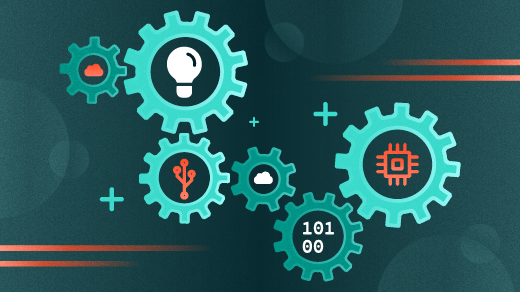
Open-Source Robotics: The Best Linux-Based Frameworks for Building Intelligent Machines
Open-source robotics is transforming the way intelligent machines are designed, developed and deployed. By leveraging Linux based frameworks developers can create customizable, scalable and high-performance robotic systems that cater to several industries ranging from industrial automation to autonomous drones.
Linux has become the leading platform for the development of robotic systems due to its stability, flexibility and open-source nature allowing for modification and customizations. With the rise of artificial intelligence (AI) driven robotics. Linux based frameworks provide essential features such as real-time processing, hardware abstraction, and advanced control algorithms.
This article explores why is Linux preferred for robotics and some of the best open-source frameworks for building intelligent machines, offering developers the tools they need to create next-generation robotic solutions.
Why Linux is Preferred for Robotics Development
Linux has become the foundation of modern open-source robotics due to its stability, scalability and open source nature. Unlike other operating systems, Linux allows developers with full control over system customization, making it ideal for robotics applications that require seamless hardware integration and real-time processing.
One key advantage is its support for real time computing, which is crucial for robots performing tasks with milliseconds precision. While the standard linux is optimized for general purpose computing, frameworks like Real-Time Preemption (PREEMPT-RT) enhances its real time capabilities. PREEMPT-RT is a patch set for Linux kernel that helps in real time processing by reducing latency and improving task preemption. The reduced latency and improved tasks scheduling allows for more control over robotic systems, making PREEMPT-RT suitable for AI-driven robots. This approach is designed to help robotic systems respond to environmental changes where split-second decisions are necessary.
Linux also benefits from a vast ecosystem of open-source robotic libraries, including Robotic Operating System (ROS), an open source framework for developing robotic applications. ROS is a set of software libraries and tools that run on top of existing operating system. It further simplifies sensor fusion, motion planning, and AI integration.
By providing reliability, flexibility and strong community support, Linux continues to be the preferred platform for building intelligent robotic systems.
Top Linux-Based Open-Source Robotics Frameworks
Below are some of the most widely used frameworks for building intelligent machines:
- Robot Operating System (ROS & ROS 2) — ROS is the most popular open-source middleware for robotics, offering pre-built libraries, drivers and tools for sensor integration, navigation, and AI based decision making. This system enhances real-time performance, security and multi-robot coordination, making it suitable for industrial and autonomous systems.
- Gazebo — Gazebo is a high-fidelity 3D stimulator that allows the developers to test the robots in realistic environments before the deployment. It also integrates with ROS and supports physics-based simulations for autonomous vehicles, drones and robotic arms.
- Mission-Oriented Operating Suite (MOOS) — MOOS is designed for autonomous marine and underground vehicles, enabling robot coordination and mission planning.
- 4. Open Robot Control Software (Orocos) — Orocos provides real-time motion control for industrial robots, focusing on precision and deterministic execution. It is commonly used in robotic arms, CNC machines, and medical robotics.
- PX4 — PX4 is an open-source autopilot framework used in drones, UAVs and autonomous flying robots. It supports GPS navigation and obstacle avoidance making it a key platform for research and development.
By leveraging these frameworks, developers can create scalable, intelligent robotic systems tailored to diverse applications, from industrial automation to autonomous exploration.
Future of Open-Source Robotics
The future of robotics is being shaped by advancements in AI, cloud computing, and real-time automation. As robotics technology evolves, linux-based frameworks will continue to play a key role in building intelligent, autonomous systems across several industries.
One major trend is the integration of Machine Learning and AI into robotics frameworks. AI-powered robots can now adapt to dynamic environments, process real time data, and make autonomous decisions, improving efficiency in applications like autonomous vehicles, industrial automation, and medical robotics.
Another major trend is cloud-based robotics, where robots offload heavy tasks to cloud servers, reducing onboard processing requirements.
With continued contributions from the open source community, robotics frameworks will become modular, scalable, and AI-driven, paving the way for next generation of intelligent robotic systems.